Android Private Apps Publish Guide & 2 Common Distribute Methods
Companies develop Android apps themselves all the time for dedicated purposes. Whether your company needs an app to serve customers or to be used by employees, having a private application can streamline business processes tremendously.
However, with private apps, companies must maintain security and ensure that their applications are only used internally and with full company control.
There has been more demand for companies to create their own apps and trim the fat. A study done by Productiv found that the average company uses “a whopping 254 SaaS apps, and enterprises average 364 apps.” The general consensus is that this is simply too many apps, leaving companies wondering if having their own app can reduce the need to use other applications.
The good news is that companies can easily distribute private apps on Android devices once they have developed them. In this article, we’ll discuss how to distribute Android private apps on employee devices.
1 4 Common Ways to Distribute Private Apps on Android
There are four common ways in which you can distribute private apps on Android devices. These are:
1) Direct Distribution
Direct distribution is completed by hosting the Android Application Package (APK File) on your own servers, thus making it available.
2) Enterprise Mobility Management (EMM)/ MDM Solutions
Another way to deploy a private application to Android devices is through using an EMM or MDM solution, such as AirDroid Business which is a mobile app management service (AMS).
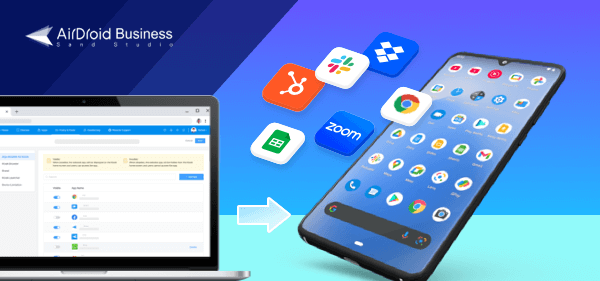
3) Google MDM
Google MDM is another resource available for distributing private apps to Android Devices.
4) Google Play’s Private Channel
Finally, private apps can be distributed via Google Play’s private channel. This is done by utilizing the Google Admin Console and adding a private Android app via uploading the APK. Then, you will be able to set who is eligible to download and install the private application.
| Method | Fees | User Download Methods | Requirements |
|---|---|---|---|
| Direct Distribution | Application hosting servers cost $70 - $320 a month | Google Play | Android 9.0 and up |
| Enterprise Mobility Management | $21 per device per year | Private App Library / Managed Google Play Store | Depend on EMM |
| Google MDM | Contact Google sales for pricing | Google Play | Android 9.0 and up |
| Google Play’s Private Channel | Contact Google sales for pricing | Google Play | Android 9.0 and up |
2 How to Publish Android Private Apps Using MDM and Distribute
This is a way that enterprises can distribute private apps without using the Google Play Console. For example, enterprises can simply use an MDM in order to publish their Android private apps.
- Step 1.Go to Apps > App Library > Organization App Library
- After logging into the MDM console, navigate through the Apps section, to the App Library, and then select Organization App Library in order to make changes to the org’s app library. These changes include uploading, releasing (test & formal), deleting, and updating.
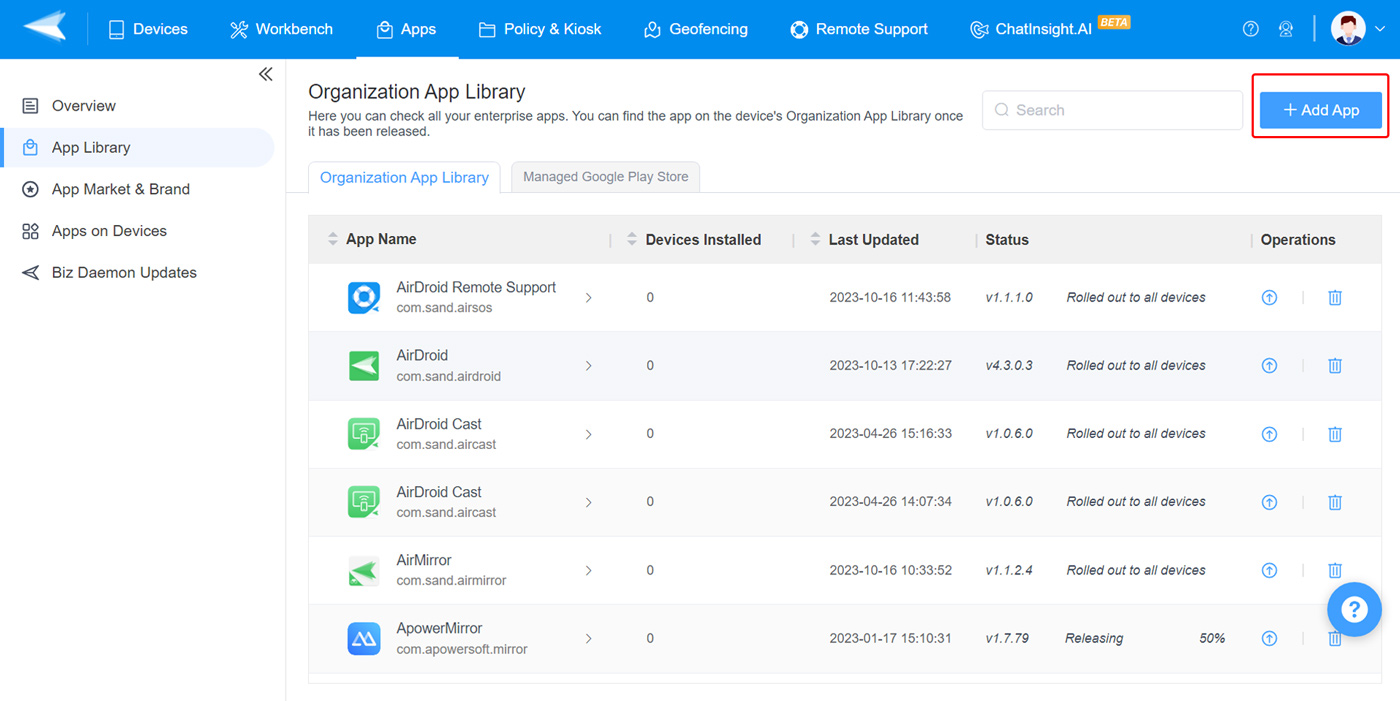
- Step 2.Click ‘+ Add App’ and upload the APK
- To upload and public your private application, select ‘+ Add App’, and then upload the APK file.
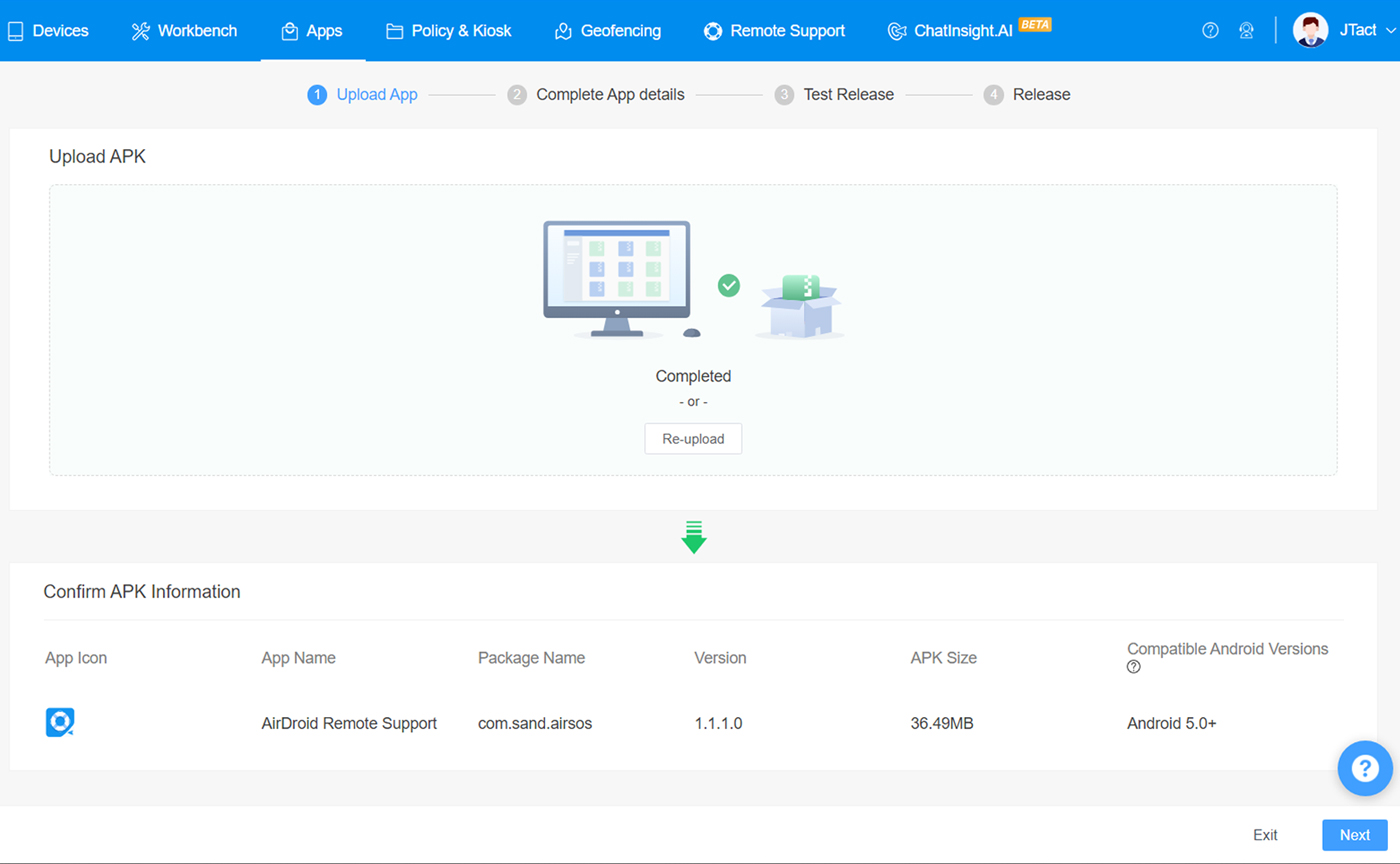
- Step 3.Complete App Info
- Fill out the application information, including the App Name, Short Description, Full Description, App Icon, Screenshots and others.
- If you've published the app in Google Play, you can click 'To acquire from Google Play' to import the app info at once.
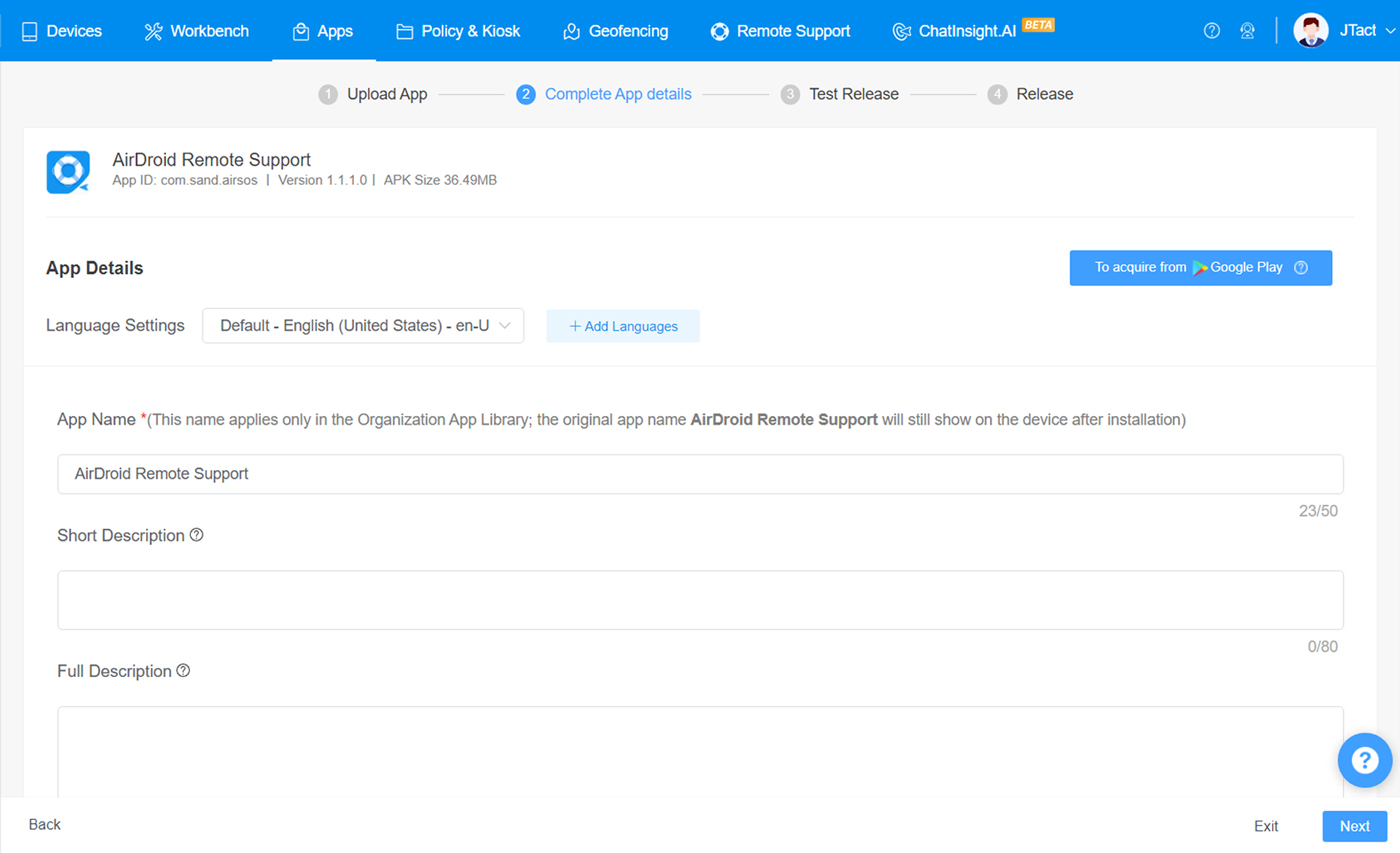
- Step 4.Deploy a Test Release
- You can allow a test release in 10 different model Android devices through AirDroid Business. This special feature allows for enterprises to test apps before formal deployment and detect compatibility issues in advance.
- Test releases are an optional step, but they are recommended to smooth out the process of deploying a new private application.
- Keep in mind, that these devices must first be enrolled to the MDM platform.
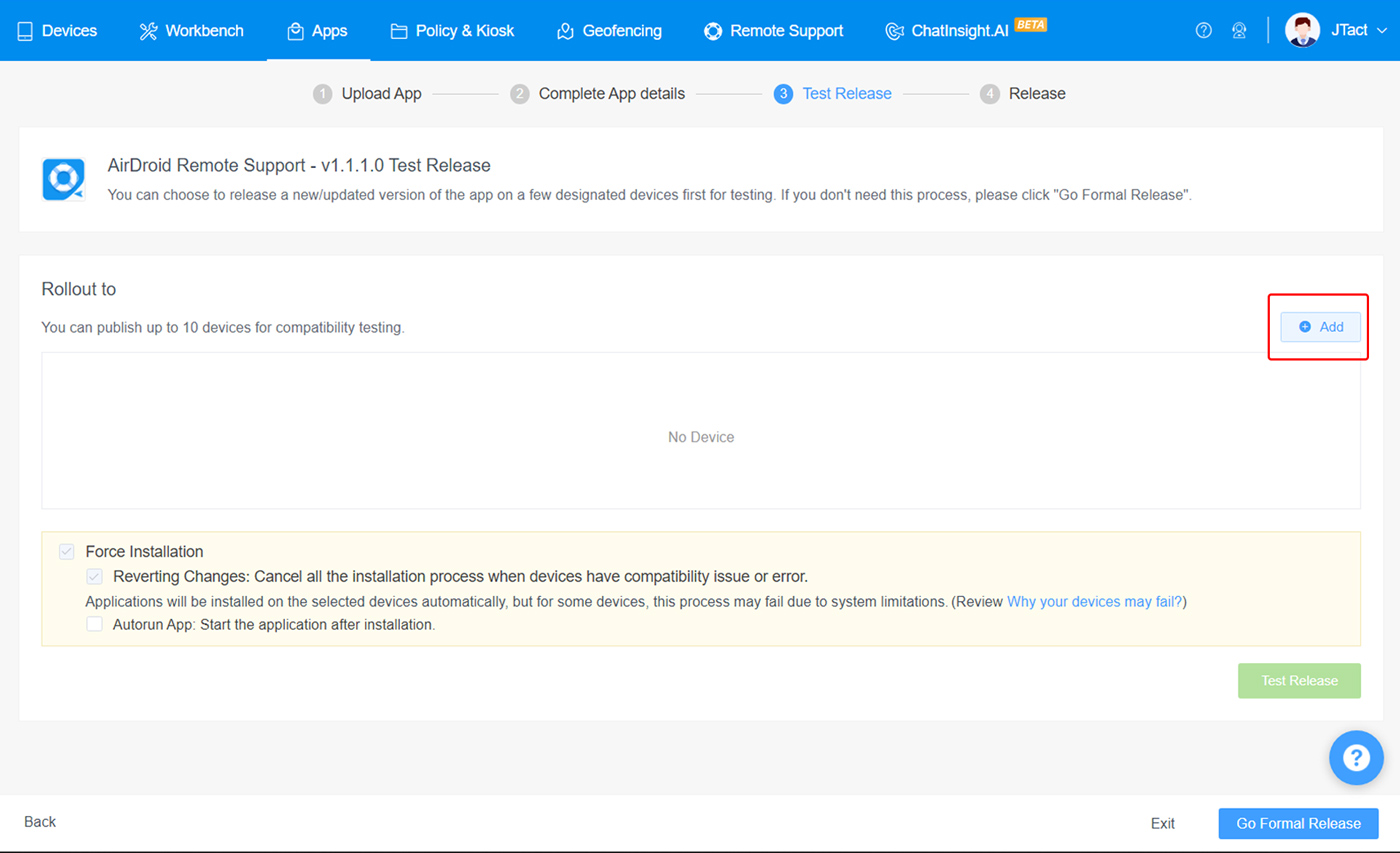
- Step 5.Consider Formally Releasing the Application
- If everything goes well with your test release , formally release the application.
- You can do a staged rollout if you prefer. Staged rollouts are available through AirDroid Business. These rollouts can be completed via percentage, groups, country, or device type. Staged rollouts are especially helpful for enterprise situations and can help to minimize issues.
- More, there are several release settings you can configure: Scheduled Release, Forece Installation, Auto-run App after installation, Download via Wi-Fi Only, and etc.
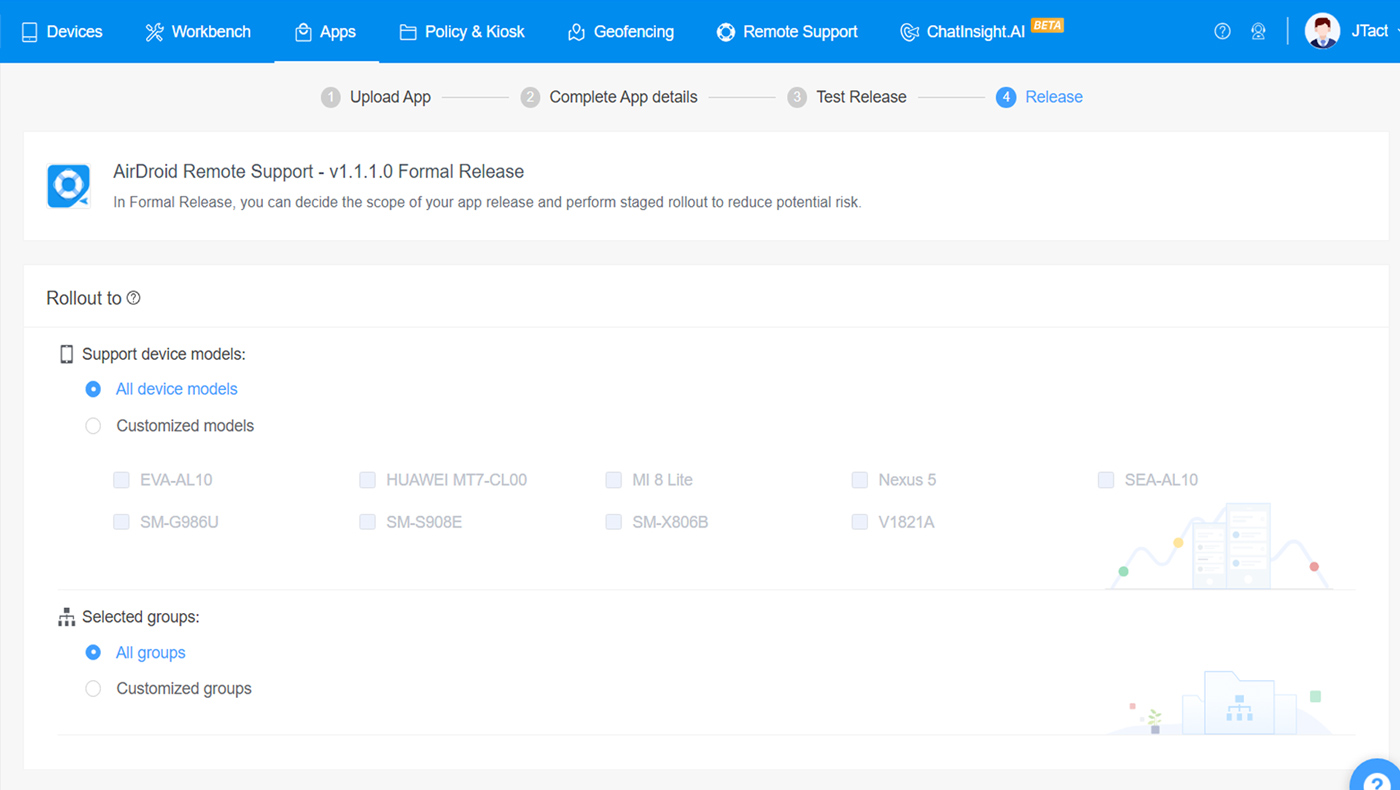

- Step 6.Distribute Android Private Apps to Enterprise Device
- Select devices in 'Rollout to.' Here you can choose certain device models or bulk publish to device groups.
- Upon installation, an App Library icon will be shown on the mobile device. You should see the private application waiting to install while rollout is occurring.
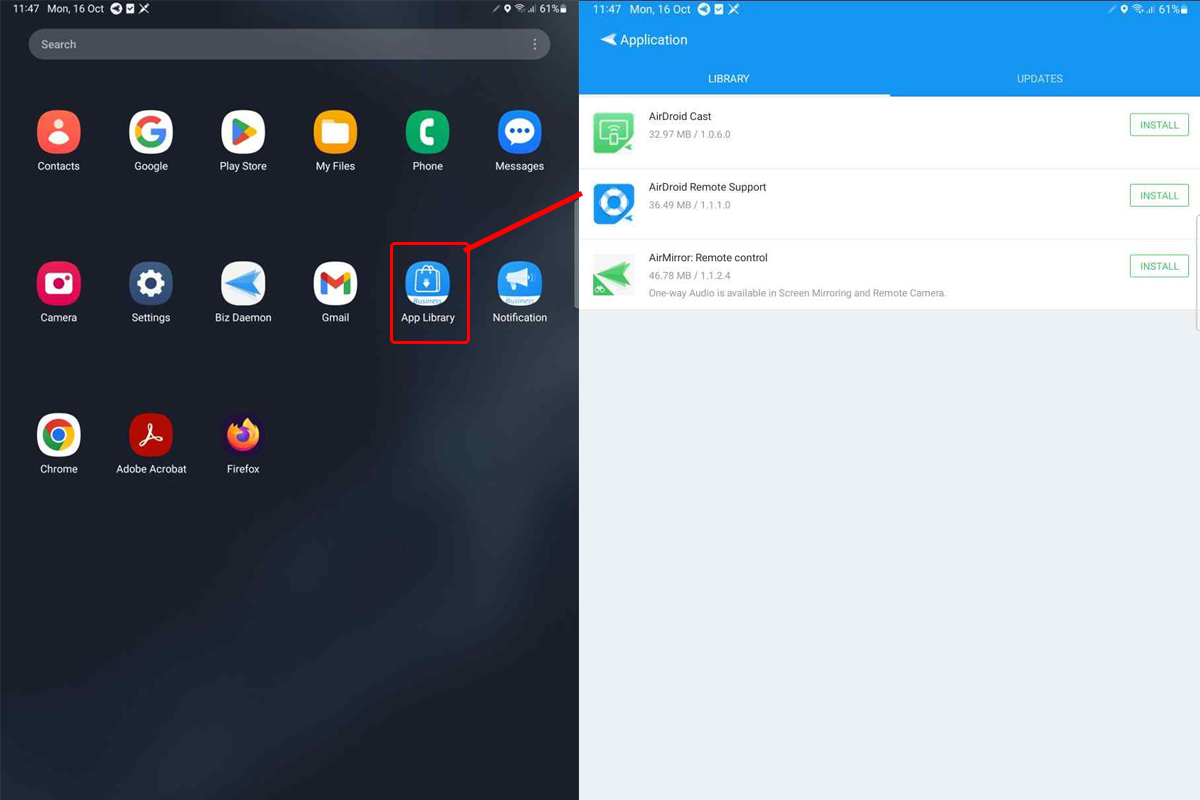

Application Management Ultimate Guide
Explore Application Management for Android Devices. With AirDroid Business, you can configure, test release, deploy, manage, update and monitor apps for your organization.
3 How to Publish Android Private Apps via Google Admin Console
In this section, we will walk through the steps to publish Android private apps via Google Admin Console.
Prerequisites:
In order to publish Android private apps via Google Admin Console, you must have:
- Registered as a Google Play developer
- Finished private application
- Must have a Google administrator account
Steps:
- Step 1. Enter the Google Admin Console to add an app.
- Step 2. Navigate to Menu > Apps > Web and Mobile Apps.
- Step 3. Add ‘App’, then ‘Add private Android app’.
- Step 4. Click Create, and enter a title for your new application.
- Step 5. Once you’ve done so, upload the APK.
- Step 6. Then, open the APK in order to edit and make changes to Google Admin Console settings related to the new app.
- Step 7. Set users who may search and download your new private Android app. These include groups, countries, devices, etc.
- Step 8. Decide and set all app options including access method, force install, widgets, and auto-update settings.
4 How Do Private Apps Work?
Private apps work as enterprise-only applications to be used and viewed by employees for personal work or to make customer interactions smoother. These applications are great for companies who are looking to offload the amount of SaaS applications that they use and pay for.
Having a private application is great for increasing productivity and streamlining processes. They can feature important functions like HR functions, communications, policy, timekeeping, scheduling, interfaces, and more.
Private apps are compatible with the Managed Google Play Store and can easily be accessed from an MDM, like AirDroid Business. Then, they can be installed from AirDroid Business directly to user devices.
5 Difference Between Private Apps and Public Apps
You may be wondering what the differences between private apps and public apps are. There are many differences between these apps, mainly in how they are found, downloaded, and accessed. In this section, we will break down the distinct differences between private and public apps, and how they are similar.
Characteristics
Private apps are generally more personalized than public apps, which sets them apart. They are built specifically for the needs of an organization. In this way, they are typically very streamlined and do not have “extra” features which are not needed or used.
Private apps are store/company specific, while public apps are used for many different companies and their processes and operations.
Publishing Method
Unlike public apps, private apps must be uploaded with an APK file and situated specifically for an enterprise to have access to download the application.
Download Method
Private apps are downloaded through Managed Google Play Store systems or MDMs, rather than accessed via the Google Play Store. This difference is to protect safety and security of the application and prevent unwanted users from having access.
| Feature | Private App | Public App |
|---|---|---|
| Target Audience | Typically designed for a specific set of users within an organization. | Designed for a broad audience and available to the general public. |
| Distribution | Distributed through controlled channels such as a private app store, direct download, email, or an Enterprise Mobility Management (EMM) solution. | Distributed through public app stores like Google Play Store or Apple App Store. |
| Integration | Typically integrate with a company's internal systems, databases, or APIs. | May integrate with public APIs or services, but not typically with specific internal systems. |
| Customization | Highly customized to meet the specific needs of the organization. | Generally designed to be as versatile as possible to cater to a wide range of users. |
| Security | High level of security due to sensitive internal data. May include features like encryption, two-factor authentication, etc. | Security level varies depending on the app's purpose and nature of the data it handles. |
Overall, developing a private enterprise app is considered an investment. Whether or not a company decides to develop a private app is a highly individual decision. There are certainly pros and cons, as many enterprises do not have their own applications. However, those who do decide to have a private app can easily upload, install, and oversee the Android private app distribution and deployment with an MDM, such as AirDroid Business.






Leave a Reply.